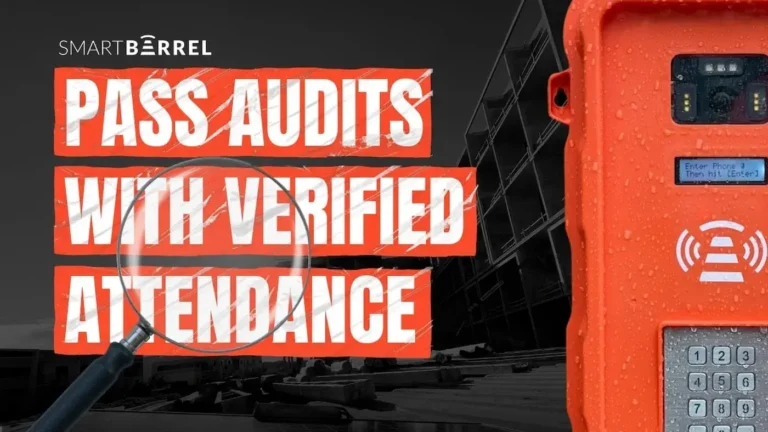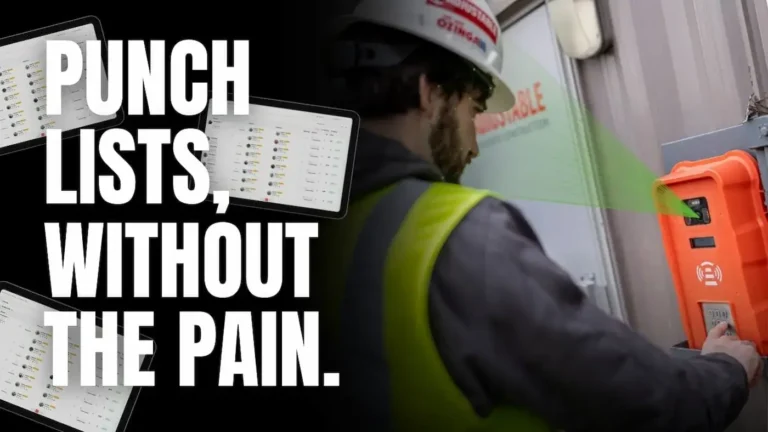Still using paper timesheets? You could be wide open to missed hours, buddy punching, and payroll headaches. Manual tracking leaves too much room for error, and every mistake chips away at your margins. If you’re trying to reduce timesheet errors, paper isn’t going to help. It slows down payroll, creates back-and-forth between the field and office, and makes it difficult to verify hours. Digital time tracking fixes that. You get clean, accurate data with no double entry and no surprises on payday. If you’re serious about keeping projects tight and profitable, it starts with getting off paper.
Why is Timesheet accuracy important in Construction?
If you’re not tracking time by task or cost code, you have no real way to job cost or know where your money went. Accurate timesheets provide you with the data to measure production, adjust estimates, and hold crews accountable. Without that, you’re guessing. And when hours aren’t tracked correctly, you open the door to timesheet errors and time theft, the two major things that quietly reduce your profit.
Payroll also depends on clean and signed records with all the right details. That’s what keeps you in line during audits and protects you in terms of labor compliance. The bottom line is that if your timesheets are off, your numbers are off.
Timesheet Challenges in the Construction Industry
Almost 38% of U.S. construction companies still rely on paper timesheets, and with that comes a stack of problems that cost both time and money. First, there’s inaccurate tracking. Workers forget to clock in or out, and supervisors end up guessing or filling it in later. That opens the door to timesheet errors and missed hours worked.
Paper adds more friction with manual entries, lost forms, and constant back-and-forth. Someone has to read the sheets, enter the data, and then fix the mistakes. Every extra step adds delays and increases the chance that something gets missed. Poor handwriting alone can throw off job classifications or shift hours, which leads to incorrect pay or compliance issues.
Approval is another bottleneck. Reviewing paper timesheets takes too long. That delay hits payroll, reporting, and your ability to make fast decisions. By the time errors show up, the damage is already done.
If you can’t trust your timesheets, you can’t trust your job costs or your labor reports. Every mistake in tracking worked hours puts pressure on your deadline. And if you’re running multiple crews or projects, those gaps only increase. Paper might feel familiar, but it’s holding you back.
Time Theft in Construction Industries
Time theft shows up in every industry, but on construction sites, it hits harder, especially when labor is one of your biggest costs. It’s not always someone sneaking off to waste time. It’s often baked into everyday habits that go unchecked.
One of the biggest problems? Long breaks. Whether it’s taking more time than scheduled or sneaking in extra ones, it adds up fast when no one’s tracking it. Then there are the late starts and early outs. If someone clocks a full shift but shows up late or leaves early, you’re paying for time they didn’t work.
Personal distractions are another drain. From phone calls to errands, workers might be on the jobsite but not actually working. Even harder to track is inefficiency, when someone is technically on the clock but not producing at the expected pace. It’s tough to catch, but it still costs you.
Lastly, there’s buddy punching. When one worker clocks in for another, it throws off your records and leads to inflated hours and payroll errors. This one issue alone can undo any efforts to reduce timesheet errors or stay compliant. If you don’t have a reliable way to track actual worked hours, then you’re guessing, and that guesswork is reducing your profits.
Get Control of Your Time Tracking
The Hidden Costs of Timesheet Errors
Even with all the tech available today, a surprising number of construction companies still depend on paper timesheets. On the surface, it might seem just a minor issue. But inaccurate timesheets carry hidden costs that directly impact the jobsite efficiency, payroll, and morale.
Financial Loss
When timesheets are off, payroll takes the hit. Overpayments, underpayments, and missed hours add up fast, especially across multiple crews. It also risks noncompliance during audits, exposing your business to penalties. Small errors multiply across weeks and projects, turning into real financial damage.
Employee Morale and Trust
Incorrect pay, whether it’s missing overtime or shorted hours, hurts trust. Crews get frustrated, and tension builds between workers and management. When workers stop believing in the system, productivity takes a hit, and you start losing good people. Accurate hours keep things fair and help reduce friction on the jobsite.
Poor Business Decisions
Inaccurate timesheets mess up the numbers you depend on. Labor reports, cost forecasts, crew performance, all of this becomes unreliable. This makes it harder to spot any inefficiencies or plan future bids. Some workers will do too little work, while others will do too much. Without solid labor data, you are guessing. Accurate timesheets are key to keeping the jobsite on track.
How to Reduce Errors in Timesheets?
Reducing errors when managing timesheets doesn’t have to be complicated, but it does need a few smart habits on the jobsite and in the office.
Start by providing employees a chance to review their hours before they are submitted. If your system allows it, let them double-check their entries. This not only cuts down on corrections later but also builds trust; workers know that they are being paid for the hours they have worked, no more, no less.
Next, get serious about setting clear rules. If workers aren’t tracking time properly, it is often because the process wasn’t explained well or enforced consistently. Train every new hire and make time tracking part of your site’s culture. Put the process in writing and follow through every time.
Finally, a clean system for fixing timesheet issues must be created. If someone forgets to clock in or out, they should be able to request a correction, but not without some oversight. Whether it’s manager approval or a quick review system, don’t let the fix be harder than the problem.
Simple structure, clear rules, and accountability go a long way toward reducing timesheet errors and keeping payroll accurate.
Real Ways Digital Tracking Cuts Timesheet Errors
Paper timesheets leave too much room for guesswork, rounded entries, and missed punches. Going digital provides contractors more control and accurate records that hold up in the real world. Here’s how modern tools help to reduce timesheet errors:
- Track Hours in Real-Time: Digital systems record when workers actually clock in and out, no longer relying on memory and estimates.
- Face ID and Geofencing Stop Buddy Punching: Biometric verification confirms the right person is clocking in and at the right location. No more covering for late coworkers.
- Manager Approvals Keep Things Tight: Supervisors can review and approve times daily or weekly, which catches the issues before payroll closes.
- See Who’s On-Site and Working: Live dashboards allow supervisors to know who’s working, where they are, and how long they’ve been active. You get full visibility into every crew.
- Make Better Use of Labor: Identify downtime, fix scheduling issues, and shift people where they’re needed, no wasted hours.
Going digital isn’t about bells and whistles. It’s about managing timesheets with tools that are fast, accurate, and built for jobsite reality like SmartBarrel.
Features of Right Time Tracking Software in the Construction Industry
Not every time tracking tool gets the job done. To keep your timesheets accurate and your crews accountable, look for software that includes these key features:
Features | Why It Matters |
Biometric Verification | Verifies who’s clocking in, stopping buddy punching, and fake logins. |
Real-Time Reporting | Gives you a live view of hours worked across jobs and helps with cost control. |
Payroll Integration | Automatically syncs hours to your payroll system. |
Jobsite Durability | Devices must handle dust, heat, cold, and rough use. Construction isn’t office work. |
Geofencing | Confirms employees are actually on site when they clock in or out. |
These features help time-tracking tools reduce timesheet errors, which makes it beneficial for your company.
Get Control of Your Time Tracking
Choosing Time Tracking That Actually Works on a Jobsite
Paper timesheets don’t cut it anymore. They open the door to many problems, such as time theft, missed hours, and payroll errors. SmartBarrel fixes that with jobsite-proven tech built for real crews.
SmartBarrel’s AI-powered facial verification confirms exactly who’s on the jobsite and when. No buddy punching and no guessing. Every clock-in is tied to the right person in the right place, which helps to reduce timesheet errors and keep labor costs under control.
It’s fast to deploy, easy to use, and built to handle rough conditions. Whether it’s pouring rain or blazing hot, SmartBarrel keeps tracking without missing a beat. And with real-time data and full payroll integration, you will spend less time fixing mistakes and more time keeping the job on schedule.
Final Thoughts
If you’re still stuck with paper or outdated systems, you are not just behind; you are also losing time, money, and visibility. SmartBarrel provides you with a smarter way to manage your crew with real-time labor tracking built for the jobsite.
From facial verification to geofencing and automated logs, SmartBarrel helps reduce timesheet errors and gives you clean, reliable data you can count on every day.
Request a free SmartBarrel demo and find out how accurate time tracking can improve payroll, boost job costing, and give you full control over labor.




